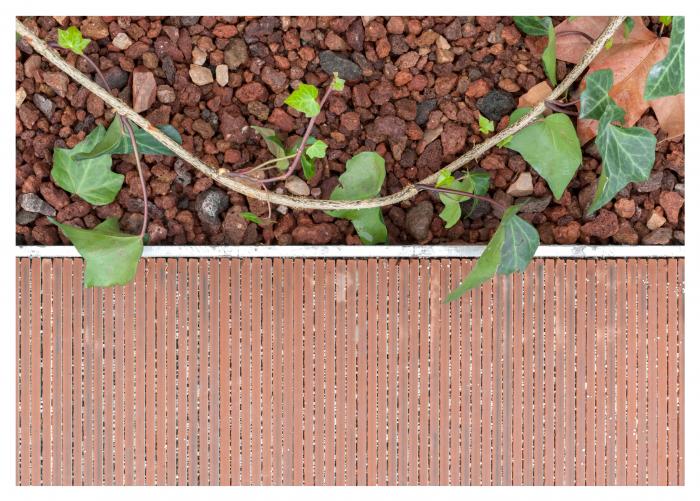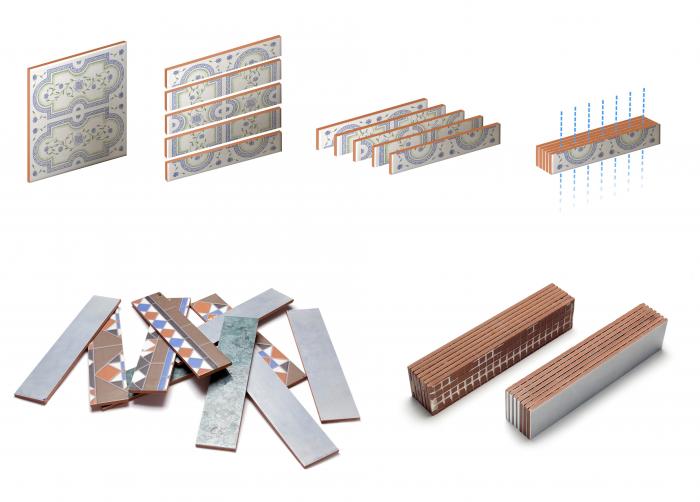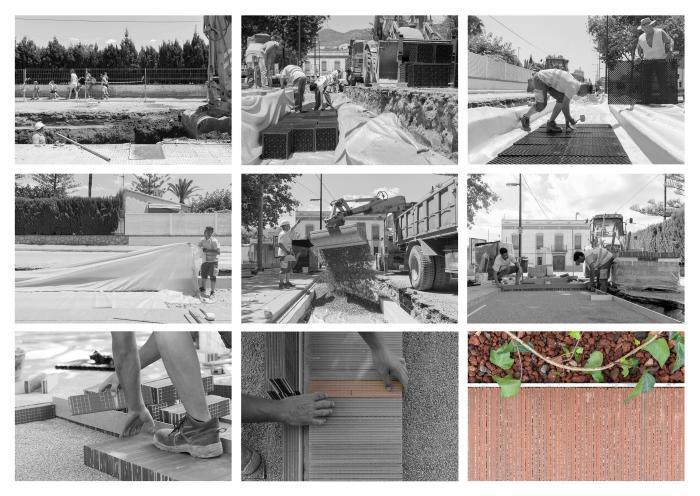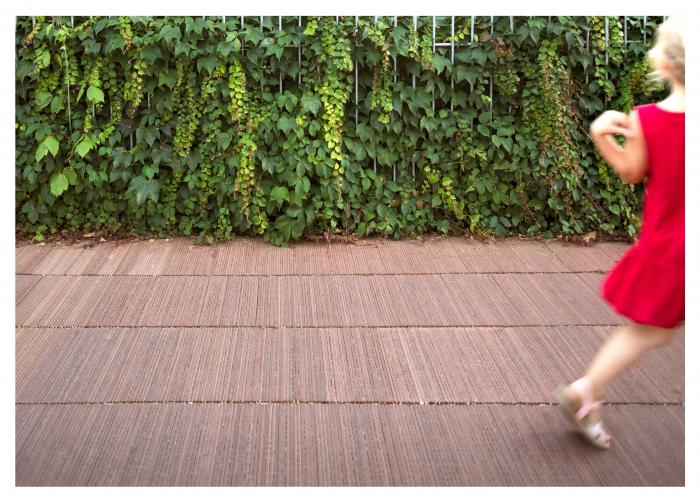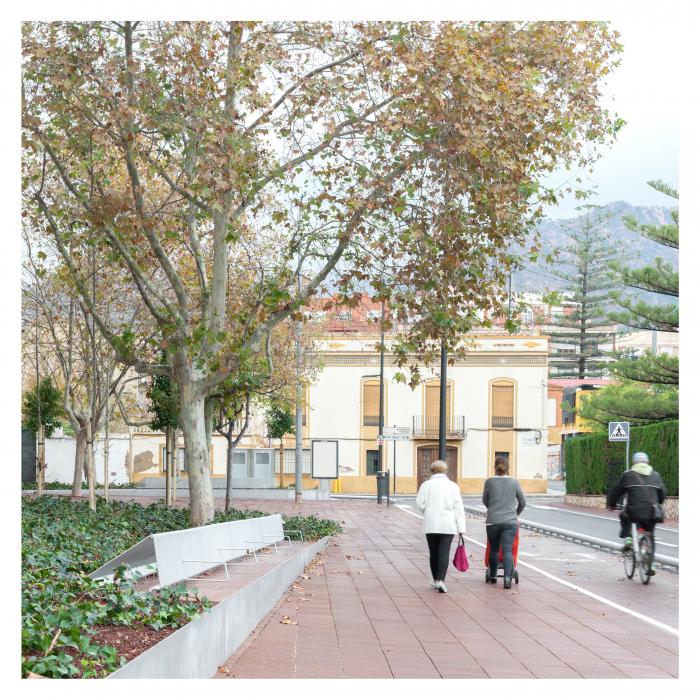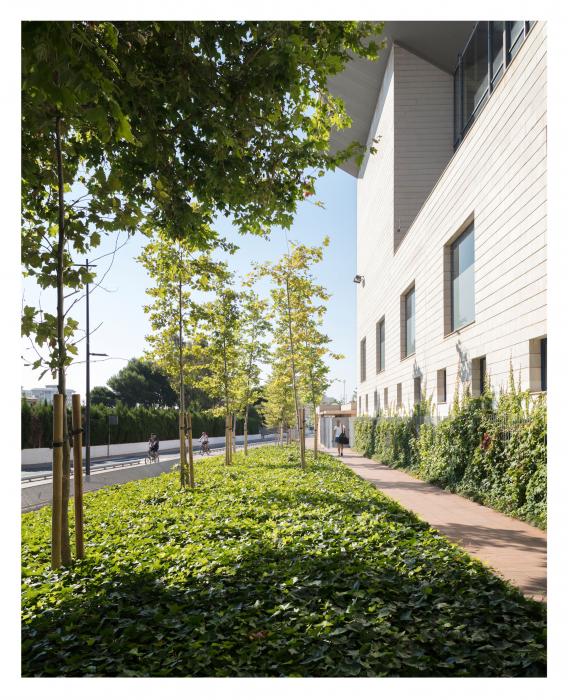I. SUMMARY INFORMATION
Project
267569
Status
Submitted
Award category
Techniques, materials and processes for construction and design
You want to submit
NEW EUROPEAN BAUHAUS AWARDS : existing completed examples
Project title
LIFE CERSUDS
Full project title
Ceramic Sustainable Urban Drainage System
Description
Sustainable drainage system (CERSUDS) pilot experience that uses low commercial value ceramics in stock as a permeable urban pavement. This floor allows water infiltration, runoff treatment and water reuse as part of a SUDS. The demonstrator, with an area of approximately 3,000 m2, has been built in a consolidated urban environment of light and pedestrian traffic located in the municipality of Benicàssim (Spain).
Where was your project implemented in the EU?
Spain
Castellón
Calle Torre Sant Vicent
Benicàssim
12560
When was your project implemented?
Has your project benefited from EU programmes or funds?
Yes
Which programme(s) or fund(s)? Provide the name of the programme(s)/fund(s), the strand/action line as relevant and the year.
This project is financed by the LIFE Programme 2014-2020 of the European Union for the Environment and Climate Action under the project number LIFE15 CCA/ES/000091.
II. DESCRIPTION OF THE PROJECT
Please provide a summary of your project
LIFE CERSUDS is a project carried out over the period 2016-2019 whom the main objective was to improve the ability of cities to adapt to climate change by promoting the use of green infrastructures in the renewal of urban environments. Under the project, an innovative permeable urban pavement was designed using ceramic tile stock of low commercial value.
The main objective of the project was to improve the ability of cities to adapt to climate change by promoting the use of green infrastructures in the renewal of urban environments. Under the project, a Sustainable Urban Drainage System (SUDS) was built as a demonstrator in the town of Benicàssim, using ceramic tile stock of low commercial value to manufacture an innovative permeable floor.
Once the demonstrator had been built, a monitoring period was run between August 2018 and July 2019, which enabled both the CERSUDS floor and the demonstrator’s value as a rainwater management system to be validated.
Please give information about the key objectives of your project in terms of sustainability and how these have been met
The main objective of the project is to improve rainwater management in cities using a permeable ceramic pavement with tiles with low commercial value with the following goals:
a) Reducing flooding due to torrential rains by increasing permeable surfaces in cities.
b)Reducing peak run-off and flow volumes that end up reaching the collector network and, hence, the water treatment station or receiving medium.
c)Protecting water quality and reducing diffuse pollution effects, thus avoiding problems at water treatment plants.
d)Reusing water stored during rainy periods for recovery in dry periods.
According to data recorded in the period September 2018 - August 2019, it is estimated that 1,060 m3 rained on the demonstrator area in a total of 28 events, with more than 1 mm of accumulated rainfall (with a total of 322 mm of accumulated rainfall in the period), and that the system has managed 86% of this volume (this water managed by the system can be reused or returned to the hydrological cycle via evapotranspiration or infiltration). Only 149 m3 have left the system downstream in a total of 5 events. From the point of view of the improvement of the quality of the water filtered by the system, the results show percentages of elimination of suspended solids of around 80%, and very significant reductions in BOD5, COD, hydrocarbons, fats and oils. From the microbiological point of view, the water stored in the tank is suitable for reuse in irrigation.
Related to ceramic permeable system, this product contributes to reduce excess stock in the ceramic sector which is about 7,33 million m² in Spain, 4,72 in Italy and 0,24 in Portugal. In addition, the installation of about 2,000 m2 of permeable ceramic pavement in the demonstrator has resulted in a reduction of 12 tons of CO2 emissions, compared to the installation of other permeable pavements.
Please give information about the key objectives of your project in terms of aesthetics and quality of experience beyond functionality and how these have been met
In terms of aesthetics and quality of experience, the main objectives were: Developing a ceramic sustainable drainage system with greater environmental efficiency for urban áreas, integrating rainwater treatment into the urban landscape and offering a quality aesthetic finish while keeping pools of water from forming and increasing street comfort and safety in times of rain.
The project approaches the reurbanization and requalification of a stretch of Torre Sant Vicent Street. This is a historic route connecting the center of the city with the beach, defining a pedestrian North-West – South-East pedestrian route perpendicularly crossing the old railway on which the future Central Park will be developed. This makes Torre de Sant Vicent one of the main axes on which the future Urban Green Infrastructure will be articulated, connecting the areas with the highest environmental, landscape, social and cultural spaces while restoring their relationship with the land.
This setting is located in a low-density residential area, characterized by the presence of several municipal sport facilities and a little children’s park which makes the street not only a habitual transit point between the beach and the city center, but also an anteroom of the existing public facilities.
The Project demonstrator organizes the system around the operation of rain gardens and are used as landscaped living areas. The pedestrian sidewalks working as infiltration areas and collecting runoff water, which is led to a channel-tank. This channel-tank, located under the bike path, stores the water needed for irrigation of the garden, covering 97% of the irrigation needs for the typical year and thus directly linking the sustainable management of rainwater and the improvement of environmental conditions in public spaces.
Please give information about the key objectives of your project in terms of inclusion and how these have been met
The action proposal is structured around the transformation of the road section existing in a single-platform section, aiming at offering a unitary and integrated response to the problems arising from the relationship between sustainable mobility, universal accessibility, ground sealing, rainwater management and the quality of public spaces. Related to the inclusión, the following actions are proposed in the project:
-Rearrangement of the existing road section, transforming it into a single platform. In so doing, pedestrian accessibility is improved, traffic speed is slowed down thus prioritizing soft mobility solutions and rainwater management is made easier (reduction of the sealed soil from the current 90% to 30% corresponding to the road área).
-Extension of the existing green áreas (75% increase of green areas), using them as seating areas as an anteroom for public building accesses
-Creation of a shaded pedestrian route, planting new trees and setting them along the walking areas.
-Rearranging access to public buildings eliminating architectural barriers and ramps while creating pedestrian routes with slopes lower than 2%.
Please give information on the results/impacts achieved by your project in relation to the category you apply for
LIFE CERSUDS has won several awards and recognitions:
-IF Award Design 2021
-Prize for innovative product or material at Future Arena de Construmat 2019, International Construction Exhibition.
-Honorable Mention at the Innovation Space of Tektónica 2019, Portugal’s International Construction and Public Works Trade Fair.
-First Prize SOM CERAMIC 2018 to the Use of Ceramic Product of Castellón Provincial Council.
In addition, it was selected in 2018 by InvestEU as an example of a project funded by the European Union.
Please explain the way citizens benefiting from or affected by the project and civil society have been involved in the project and what has been the impact of this involvement on the project
One of the first actions involved the creation of a Regional Working Group (RWG-LC), made up of several public administrations, entities and organizations involved in water management policies, where interests, synergies and appropriate strategies for the proper development of the project were defined. The members and representatives of member entities of the Regional Working Group have contributed their experience in the field of regulations, water quality, distribution and collection networks, as well as their accumulated experience in the development of LIFE projects with evident links with this project.
On other hand, in order to assess the degree of user satisfaction, a number of individual local inhabitants from the town were surveyed in Torre Sant Vicent street, where the LIFECERSUDS demonstrator was built, and asked to answer a series of multiple-choice questions on a tablet and with an interviewer to explain the questionnaire. Construction of the demonstrator was completed in August 2018 and six months later, in February 2019, 100 surveys were conducted on the 7th and 12th of that month. The results can be considered representative of the entire population (i.e. the population of Benicàssim), with an error margin of less than 10% for a confidence level of 95%.
The questions dealt with aspects such as comfort when walking, absence of run-off water during periods of heavy rain, general quality of the infrastructure, improvement of the urban space, etc. The survey included a total of ten questions in all and when any negative answers were given, the causes of dissatisfaction were investigated through an open question. The statistical mean of all the questions was 4 (on a scale from 1 to 5, where 1 was the worst score and 5 the best), indicating that a large majority of the interviewees considered the quality of the intervention to be good or very good.
Please highlight the innovative character of the project
The project shows a new permeable urban soil where low commercial ceramic tiles in stock are used in a previously unexplored arrangement. This configuration of the ceramic strips multiplies the joins between them achieving a high permeability (between 8,000 and 10,000 liters of water/m2 per hour after one year in operation) and mechanical resistance. Under the floor, there are a series of layers as gravel and geotextile that effectively filter the percolated water. This system transforms the urban surface in an efficient mechanism to manage rainwater and return clean water to the soil.
Please explain how the project led to results or learnings which could be transferred to other interested parties
Two of the project's objectives were the training of professionals and replicability in other municipalities/countries.
The experiences accumulated during the design and implementation stages of the ceramic system and the demonstrator, together with the knowledge gained in Urban Water Management Systems have allowed for the generation of training material and precise technical documentation for the replication of permeable pavements based on the principles of the demonstrator in other cities. This material is available in four languages (Spanish, English, Portuguese and Italian) and can be downloaded at http://www.lifecersuds.eu/es/documentos .
As for the replication of the system in other locations, we are collaborating with the LIFE Lugo+Biodynamic project for the inclusion of the system in the Project demonstrator. The project for the remodeling of the surroundings of Anselm Clavé Square in Sabadell is also being drafted. The H2020 GrowGreen project, which is being developed in Valencia, has also shown interest in incorporating the pavement in some of its interventions. The system will also be installe in Castellón región, specifically in the city of castellon (Avenida Lidón) and in the town of Cante lo Roig (Plaza de España square). On the other hand, work continues on the blueprints so that the same system can be replicated in Portugal.
In addition, the project has been included as an example of good practice in the platform for adaptation to climate change in Spain (Adaptecca). (more information in https://www.adaptecca.es/sistema-urbano-de-drenaje-sostenible-ceramico-life-cersuds-proyecto-demostrador-desarrollado-en).
Is an evaluation report or any relevant independent evaluation source available?
No
III. UPLOAD PICTURES
IV. VALIDATION
By ticking this box, you declare that all the information provided in this form is factually correct, that the proposed project has not been proposed for the Awards more than once under the same category and that it has not been subject to any type of investigation, which could lead to a financial correction because of irregularities or fraud.
Yes
